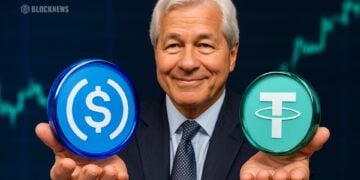- XRP’s network just saw a 60.87% jump in its burn rate, with fees burned rising from 667 XRP to 1,073 XRP in 24 hours, signaling a clear spike in on-chain activity and usage.
- Because every transaction permanently destroys a small amount of XRP, higher activity means faster gradual supply reduction, reinforcing XRP’s built-in deflationary model over time.
- This combination of rising burn rate, steady usage, and fixed supply supports the idea that XRP’s scarcity and long-term value proposition strengthen as the ledger is used for real-world payments and liquidity.
XRP’s network has quietly kicked into a higher gear. Over the last 24 hours, usage on the XRP Ledger sped up enough that the number of tokens burned as transaction fees jumped from 667 XRP to 1,073 XRP. That might look tiny next to XRP’s total supply, but the shift in pace is what really matters here.
XRP enthusiast Skipper (@skipper_xrp) flagged the move, noting that the burn rate has “skyrocketed significantly by 60.87% in the last 24 hours,” which is a pretty sharp change for such a short window. In simple terms, more XRP is being burned because more is being used.
The burn amount itself is small, sure, but the increase usually maps to higher on-chain activity: more transactions, more payments moving around, more actual use of the ledger instead of just idle holding. In a market where sentiment can flip in a heartbeat, this kind of growth suggests that confidence in XRP’s infrastructure hasn’t really faded. People are still using the rails, which is what ultimately keeps a network relevant.
XRP’s Built-In Deflationary Design
This ties straight into XRP’s deflationary design. Built into the protocol is a mechanism that permanently destroys a tiny slice of XRP with every single transaction. Over time, that means the total supply doesn’t inflate, it actually shrinks, bit by bit.
When activity rises—whether it’s cross-border payments, on-chain liquidity flows, or tokenized asset transfers—the burn rate climbs along with it, slowly tightening supply. That recent 60.87% jump in burned tokens is a sign the ledger is seeing stronger transactional demand, lining up with XRP’s long-term vision of supporting global payment flows, even if the short-term price action still whips around like crazy sometimes.

Why A Higher Burn Rate Matters For Long-Term Value
For many investors, this higher burn rate is more than just a nerdy blockchain metric; it’s a positive signal for long-term value stability. Every token destroyed makes the remaining pool just a little more scarce, and if demand holds or grows, that scarcity can help support price over time.
Unlike inflationary assets that keep minting new units into circulation, XRP runs on a fixed maximum supply with built-in gradual contraction. When network usage picks up alongside increased burning, it tells a simple story: the system is being used for what it was designed to do—real-world settlement and liquidity—and the deflationary engine under the hood keeps quietly ticking as that happens.














